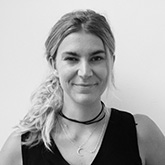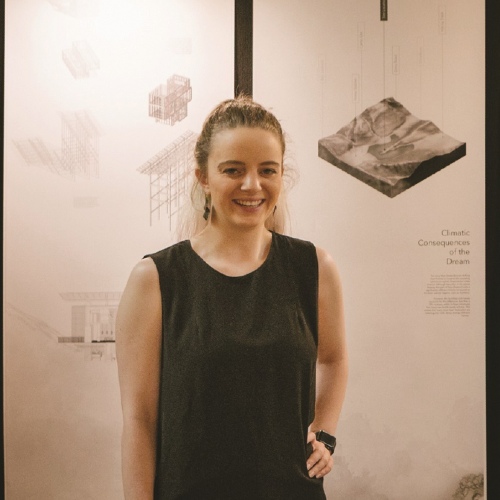
Master of Architecture (Professional) – MArch(Prof)
Become an architect through advanced study at postgraduate level and be part of shaping our built environment.
The people you work with and learn from are an important part of your studies. Learn who the teaching staff are and hear what the programme is like.
Academic staff
- Daniel BrownDaniel Brown—Storm and flood proofing urban communities, sustainability and resilience, narrative architecture and cultural practices, architecture of Southeast Asia and the Pacific Rim
- Fabricio ChiccaFabricio Chicca—Sustainability in urban areas, tangible and intangible values of the real estate market, BIM (Building Information Modelling), urban agriculture, project management
- Michael DuddingMichael Dudding—Architectural history (20th century), New Zealand architectural history, oral history, architecture for the elderly
- Dr Morten GjerdeDr Morten Gjerde—Urban planning and design including long-term management of the built environment, medium density housing—amenity and design outcomes, uses of concrete in the built environment
- Derek KawitiDerek Kawiti—Parametric design methods, generative digital modelling, digital heritage and ‘low’ and ‘high’ tech digital fabrication, implications of digital technologies in the convergence with indigenous traditional knowledge
- Adele LeahAdele Leah—Environmentally and socially sustainable design, architectural education and practice, material reuse and self build, participatory design tools and methods
- Guy MarriageGuy Marriage—Urban space, significance of social space, construction technology, prefabrication technology, sustainable building technology, New Zealand architectural history
- Prof Joanna Merwood-SalisburyProf Joanna Merwood-Salisbury—Architectural history in the 19th and 20th centuries, architectural theory, history and theory of interior architecture and design, public space, history of urbanism
- Chris McDonaldChris McDonald—Nineteenth-century colonial town planning, town foundation in Australia and New Zealand, street patterns in New Zealand cities
- Jacqueline McIntoshJacqueline McIntosh—Sustainability in housing including issues in culture, construction innovation and disaster recovery; and architectural pedagogy, social constructivist theories of teaching and learning
- Tane MoletaTane Moleta—Architectural design, VFX and architectural visualisation including: virtual reality/ mixed reality/ augmented reality, serious games, parametric design, architectural and design education
- Dr Maibritt Pedersen Zari Dr Maibritt Pedersen Zari —Sustainable architecture, biomimicry, wellbeing, regenerative development, climate change, biophilic design
- Prof Marc Aurel SchnabelProf Marc Aurel Schnabel—Virtual & augmented environments: digital heritage, collaborative digital design, social network learning; parametric & algorithmic modelling & simulation: BIM & CIM, urban form & thermal comfort, traffic & urban design (UC-Win Road), real-time simulation (FUZOR), intelligent cities; digital manga: digital architectural narratives and visualisation
- Robin SkinnerRobin Skinner—Postcolonialism and architecture, 19th century discourse, New Zealand architecture, Pacific architecture, design method
- Dr Jan SmitheramDr Jan Smitheram—Contemporary architectural theory and history; performance, performativity, affect, occupation; relationships between the body and interiors
- Mark SouthcombeMark Southcombe—Applied architectural thinking, design practice and teaching, research through the medium of design, prefabricated housing, collective urban housing
- Simon TwoseSimon Twose—Connections and transferences between practice and theory, architectural representational media, design process, relation between the body and the built, architectural practice as an experimental activity and built projects as a form of critical practice
- Dr Peter WoodDr Peter Wood—Architectural theory, visual literacy and architecture, New Zealand architecture, architectural education, architectural drawing, the house
- Hans-Christian WilhelmHans-Christian Wilhelm—Joint, detail and pre-fab construction concepts as design drivers across different times and scales, in architecture and furniture design. Housing, including performance enhancements, rejuvenation and refurbishment of housing complexes, innovation in housing typology.

Claudia van Velthooven
Master of Architecture (Professional) student
I’ve been offered a position at Warren and Mahoney. Melbourne has a very exciting architectural scene and I think this will be a great follow on from my studies at Victoria University of Wellington.
Knowing her mind
Art and Calculus were Claudia van Velthooven’s favourite topics in school, and she knew from then she wanted to be an architect.
“I love the idea that our built environment is, in some respects, the biggest form of public artwork and I want to be a part of crafting it.”
Study abroad
The Architecture programme has provided Claudia with opportunities to develop her skills and grow as a person. This included the chance to spend a semester in Mexico on a student exchange.
“This was an incredible opportunity and gave me a new perspective on architectural design. I was immersed in a different culture and gained a new awareness of the beauty in cultural diversity and the impact this has on our designed environments.”
Flexibility and support
In her fifth year of study, Claudia is looking at computational design methods. She has found the University to be flexible and supportive throughout her studies. As a keen volleyball player, during her second year she was selected to travel to China as part of the New Zealand women’s volleyball team.
The University worked with Claudia to ensure she could take the trip without it affecting her studies.
A helping hand
She is hoping to head to a conference overseas later this year to present her thesis and appreciates the support the University offers.
“The University has been very encouraging, offering conference funding, and numerous scholarships are also available.”
Ready for work
Claudia will be moving straight into a job in Melbourne when she finishes her studies.
“I’ve been offered a position at Warren and Mahoney. Melbourne has a very exciting architectural scene and I think this will be a great follow on from my studies at Victoria University of Wellington.”

Emily Newmarch
Graduate, Master of Architecture (Professional)
It was a challenge to combine all of my interests into one project, but with the help of my supervisors, the scope of the project came together.
Award-winning research
Emily’s research explored how architects can combine the pragmatic and the poetic. It led to her winning the New Zealand Institute of Architects (NZIA) Student Design Award, the top honour for architecture students in the country.
Emily designed two series of small, 10m2, timber cabins and applied the findings to develop a larger 100m2 timber house. She looked at key design features that could contribute positively to the poetic narrative the building has with its landscape, and to improving the thermal and energy performance of the building.
Her designs were developed to suit the area around Lake Moke, near Queenstown, stemming from her personal connection with the area and its high demand for building developments.
Developing solutions
Emily used a software called ArchiCAD to construct her designs and test the performance of different design elements.
“I knew from previous work experience that this software, and similar software, had limitations, due to being semi-automated,” says Emily. “So another goal of my project was to test ArchiCAD’s performance calculations against a similar software called Revit to see how accurate these semi-automated simulation platforms were at measuring thermal performance and energy consumption of buildings using New Zealand's timber construction techniques. I was able to define some of the inaccuracies and develop solutions to getting a more reasonable result.”
Exciting opportunities
This work has led to some exciting opportunities, including a presentation at a conference in Hong Kong and the chance to beta-test a new plugin for the ArchiCAD software that could be used to simulate thermal bridges to give a more detailed understanding of the building envelope.
Emily says her Master’s project is a culmination of all her previous practical work experience, architectural education, and research.
“It was a challenge to combine all of my interests into one project, but with the help of my supervisors, the scope of the project came together.”
Tessa Lynch
Graduate, Master of Architecture (Professional)
What excited me most about the research was working closely with students.
Developing a specialisation
Tessa Lynch was drawn to the Master’s programme as a means to explore her interest in architecture in a deeper way and develop a specialisation she was passionate about.
Her research advocated wellbeing as a central focus in the design of our built environments, and she situated the research within an important environment for students— the university campus.
“We know that social and spatial environments can affect our mental health,” says Tessa. “But it is an under-researched field which needs motivation to stimulate discussion and change.
“The outcome of my research was a resource to guide the design of tertiary spaces supportive of wellbeing. I developed a conceptual framework alongside five intervention points, which could have a positive effect on student wellbeing if implemented as a system.”
Collaboration
Tessa ran focus groups with students and installed a temporary lounge in the atrium of the Te Aro campus, a collaboration with the Student Architecture Network New Zealand (SANNZ), to engage students in the research.
“What excited me most about the research was working closely with students. One of the most important goals was to capture a diverse range of students’ needs and views. Through focus groups, I met with students across disciplines and campuses. Spatial wellbeing priorities were identified, and different understandings of wellbeing were unpacked.
“Students desired more comfortable spaces—this was a recurring theme, which motivated the SANNZ lounge installation. We drove around Wellington with a trailer in tow, collecting furniture from students’ flats on loan for the week.”
Research coming to life
“I saw my research come to life during the lounge installation. It gave me confidence in the process of engaging and implementing the findings from the focus group discussion and literature.”
Tessa’s supervisor, Emina Petrovic, shared her motivation to explore architecture for social change.
“Emina encouraged me to work to my own strengths and supported the multidisciplinary nature that the research became. She wholeheartedly supported and guided me through the entire project.”
Previous
RequirementsNext
How to apply

